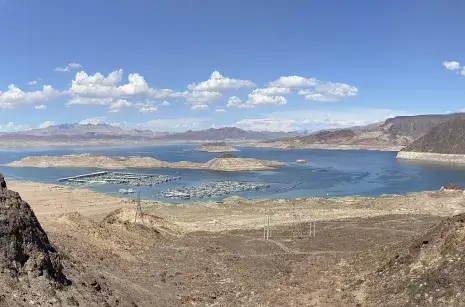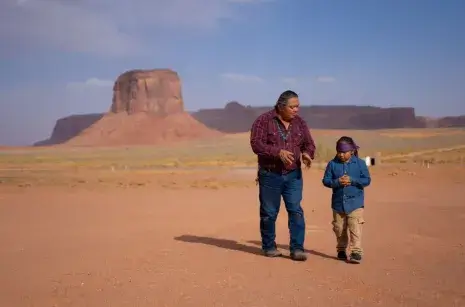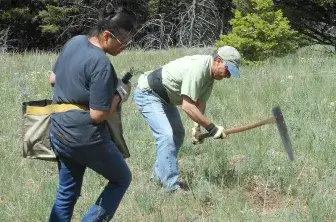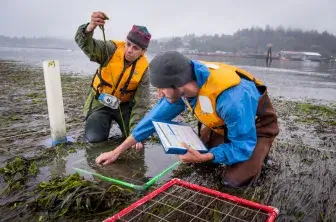Strategy 5: Adapt Everywhere
Invest Equitably in Adaptation
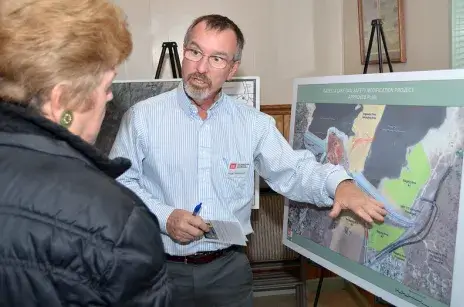
Good plans need buy-in from everyone. Adaptation plans should be a joint effort between the government, states, cities, tribes, businesses, and non-profits. Strengthening these connections and planning means that in a crisis, everyone knows what to do and who to turn to for help. Some initiatives have already been successful at promoting this style of planning.
More recommendations
Climate adaptation planning is critical for national security and efficient resource use. Without adequate planning, climate impacts will be more disruptive to critical infrastructure such as power grids, transportation systems, and communication networks.[i] Climate will also have greater impacts on food and water security, which are critical for the country’s health and well-being.[ii]
Despite the importance of these systems, few resources are devoted to city, county, state, and regional adaptation planning. Given the intricacies of preparing society for climate impacts, funding community-based plans is critical for tuning to local needs and opportunities.[iii] Normalizing a culture of adaptation planning will also encourage virtuous cycles of continuous improvement.
Federal funding, such as the Department of Housing and Urban Development’s National Disaster Resilience Competition grants, has effectively provided communities like those on the Ohio Creek Watershed in Norfolk, Virginia, with the resources to implement adaptation strategies to reduce flooding, improve the local economy, and strengthen neighborhood connections.[iv] This adaptation plan engages several players, including the city, the local community, nonprofit organizations, and architectural firms.
The federal government must mobilize the private sector to develop tools for community adaptation and resilience through public-private partnerships. Investments in green technology, such as sustainable transportation and resilient buildings, benefit both local communities and investing companies. One example is the Rockefeller Foundation’s 100 Resilient Cities Initiative, launched in 2013, which provides funding and technical assistance to cities worldwide to develop and implement resilience strategies. The initiative has also received support from private sector partners such as Swiss Re, Microsoft, and Veolia.
[i] Samuel A. Markolf, Christopher Hoehne, Andrew Fraser, et al., “Transportation Resilience to Climate Change and Extreme Weather Events—Beyond Risk and Robustness,” Transport Policy 74 (3) (2019): 174–186, https://doi.org/10.1016/j.tranpol.2018.11.003; Mathaios Panteli and Pierluigi Mancarella, “Influence of Extreme Weather and Climate Change on the Resilience of Power Systems: Impacts and Possible Mitigation Strategies,” Electric Power Systems Research 127 (2015): 259–270, https://doi.org/10.1016/j.epsr.2015.06.012.
[ii] Tim Wheeler and Joachim Von Braun, “Climate Change Impacts on Global Food Security,” Science 341 (6145) (2013): 508–513, https://doi.org/10.1126/science.1239402; James S. Famiglietti, “The Global Groundwater Crisis,” Nature Climate Change 4 (11) (2014): 945–948, https://doi.org/10.1038/nclimate2425; and Terry Marsden and Roberta Sonnino, “Human Health and Wellbeing and the Sustainability of Urban-Regional Food Systems,” Current Opinion in Environmental Sustainability 4 (4) (2012): 427–430, https://doi.org/10.1016/j.cosust.2012.09.004.
[iii] Linda Shi, Eric Chu, Isabelle Anguelovski, et al., “Roadmap towards Justice in Urban Climate Adaptation Research,” Nature Climate Change 6 (2) (2016): 131–137.
[iv] See U.S. Department of Housing and Urban Development, National Disaster Resilience Competition, https://www.hud.gov/program_offices/economic_development/resilience/competition (accessed June 12, 2023) (accessed June 12, 2023); Tim Hare, John Millspaugh, and Scott A. Smith, “Honey, I Shrunk the Pump Stations: The Value of Using Physical Modeling and Natural Features in Design,” paper presented at the Water Environment Federation’s 92nd Annual Technical Exhibition and Conference (WEFTEC 2019), Chicago, Illinois, September 21–25, 2019, https://doi.org/10.2175/193864718825157315.


